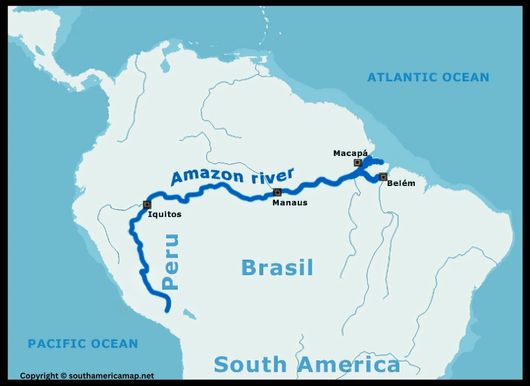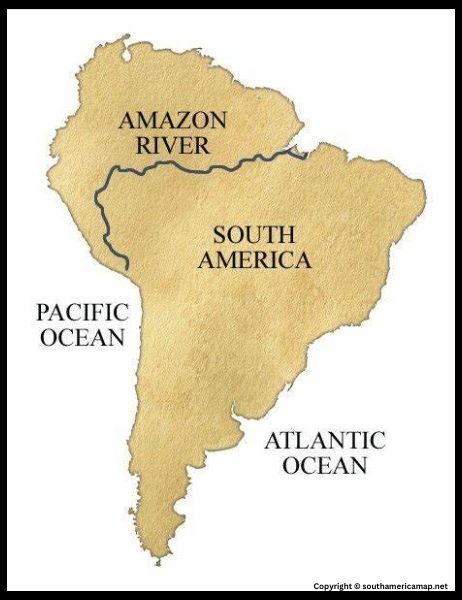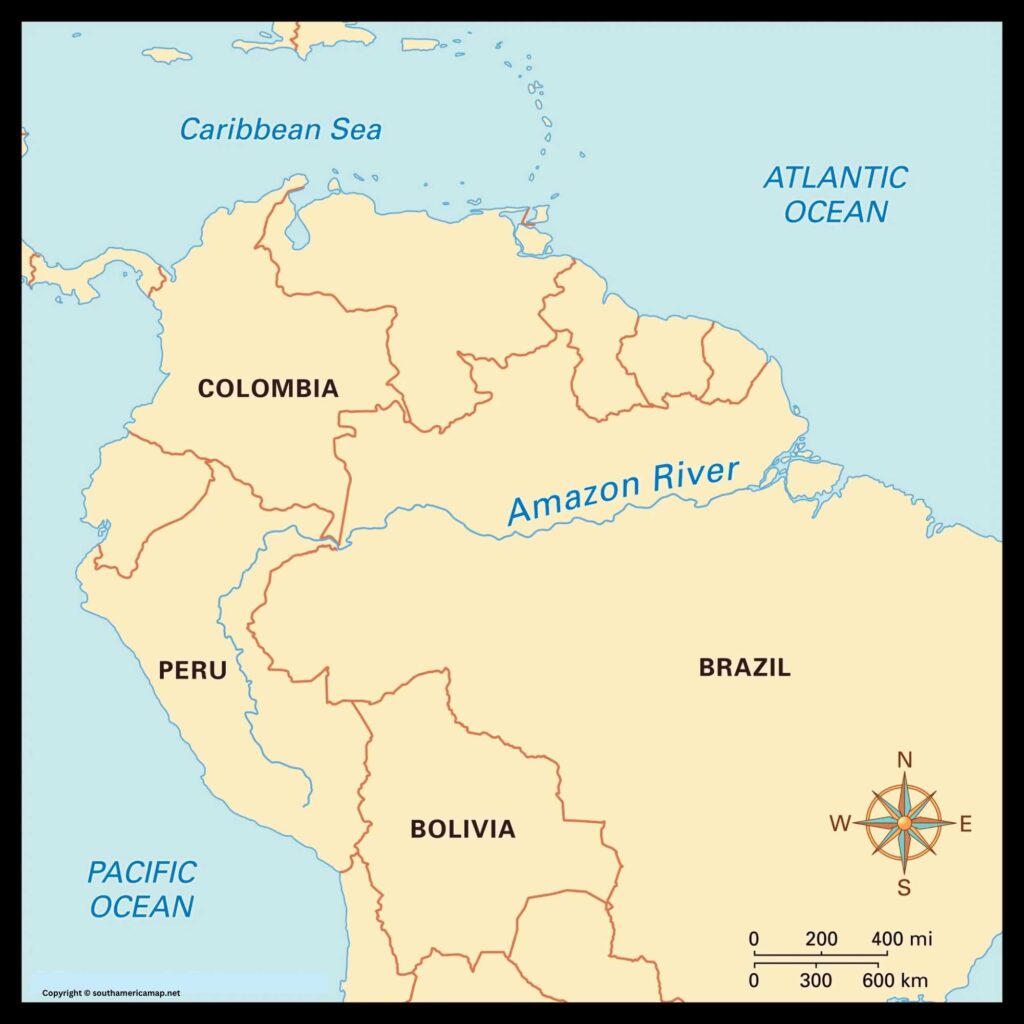Map Amazon River South America – The Amazon River, followed by Neil, is the second longest river in the world, a huge Jalakund that makes its way through the center of South America. Flowing from the Andes Mountains in Peru, the Amazon River wanders in the east through the continent, finally discharged into the Atlantic Ocean in Brazil. Its huge drainage basin, or Amazon Basin, includes more than 7 million square kilometers (2.7 million square miles) and includes the largest tropical rainforest on the planet, Amazon Rainforest.
Related Post –
- South America Map with Capitals
- Peru Map
- North And South America Map
- Map of South America Countries
- Political Map
Map Amazon River South America
The Amazon River is surprisingly a life for diverse ecosystems, which passes through it. Its vast system of tributaries such as Rio Negro and Rio Madeira, such as its huge system, lends the amount of its gargantuan water. In the wet season, the river can also double its width, which can develop heavy floodplains that host special flora and organisms. The Amazon Rainforest, commonly known as the “Earth’s lungs”, is also a source of oxygen of the globe, which is responsible for regulating climate globally as it absorbs and stores a huge amount of carbon dioxide.
Traveling up the Amazon River is an journey into a nearly pristine and unspoiled barren region. The river itself is teeming with a astounding variety of wildlife, including iconic creatures like jaguars, capybaras, river dolphins, and hundreds of species of fish and birds. The dense cover along its banks helps an amazing variety of vegetation, tons of which remains unexplored and cataloged by means of scientists.
Human societies have prospered alongside the Amazon River for centuries, and indigenous peoples have found out to conquer the demanding situations and possibilities of the river and forest. The river is a number one aid for shipping, fishing, and farming most of the local peoples. The location additionally suffers a number of environmental and conservation demanding situations, which include deforestation, loss of habitat, and threat to biodiversity.
Tourists and pupils alike visit the Amazon River to discover its unparalleled range, to immerse themselves inside the wonderful cultures of river groups, and to assist in endeavors to keep this critical environment. The Amazon River is an icon of South America’s first rate natural riches and ecological importance, and its protection has worldwide implications.
Amazon River on South America Map
The mapping of the Amazon River in South America is of great importance for serious purposes, which ranges from environmental protection, scientific investigation to monetary interests. Following are the most important points describing the importance of maping the Amazon River:
Biodiversity Protection: Amazon River Basin is situated through the extraordinary rich style of flowers and animals. Proper mapping enables the identity and safety of major houses, which allows for the protection of the surrounding biodiversity. Organizing the area of species and ecosystems in the organizing effective conservation techniques.
Ecosystem management: Mapping the Amazon River and its tributaries facilitates managing huge and difficult ecosystems inside the Amazon basin. This allows scientists and policy makers to tune land usage adjustment, deforestation and other environmental trends, allowing them to combat the results of human activities on those ecosystems.
Climate Change Studies: Amazon rainforest carbon dioxide is necessary in maintaining climate worldwide through sequenceing and storage. Accurate mapping helps scientists to tune deforestation rates, carbon stores and normal fitness of rainforest. This record is important for understanding the consequences of climate business and understanding how to combat them.
Resource Management: Basin and Amazon River provide precious sources for nearby groups and global industries. Determine the appropriate places for operations such as fishing, agriculture and forestry, mapping AIDS in dealing with resources, and for the reason these activities are executed with endangering the welfare of the long period of environment.
Amazon River South America Map
Navigation and Transport: Amazon River is a major shipping path, which enables commerce and travels in the area. Good maps help in secure navigation, allow ships and boats to raise through a complicated system of waterways. This is particularly critical for change and motion of products inside and out of the Amazon basin.
Research and training: Scientists of Amazon River help in studies by way of serving as a final analysis for many studies which includes Hydrology, Geology and Ecology. These scientific maps are valuable sources for scientists, teachers and college students who are willing to apprehend the complex dynamics of the Amazon River and its embodied ecosystem.
Disaster Management: Amazon Basin is unsafe for natural disasters like floods and landslides, mainly during the wet season. Accurate mapping helps determine susceptible areas, permitting disaster preparations and reactions to enhance. It is important inside the protection of each human population and environment.
In short, Charting to Amazon River is significant to face up to the complicated demanding situations and opportunities of this huge and dynamic place. It helps sustainable improvement, safety, and growth in information of interconnected systems that gift an vital detail of the worldwide surroundings to the Amazon River Basin.


